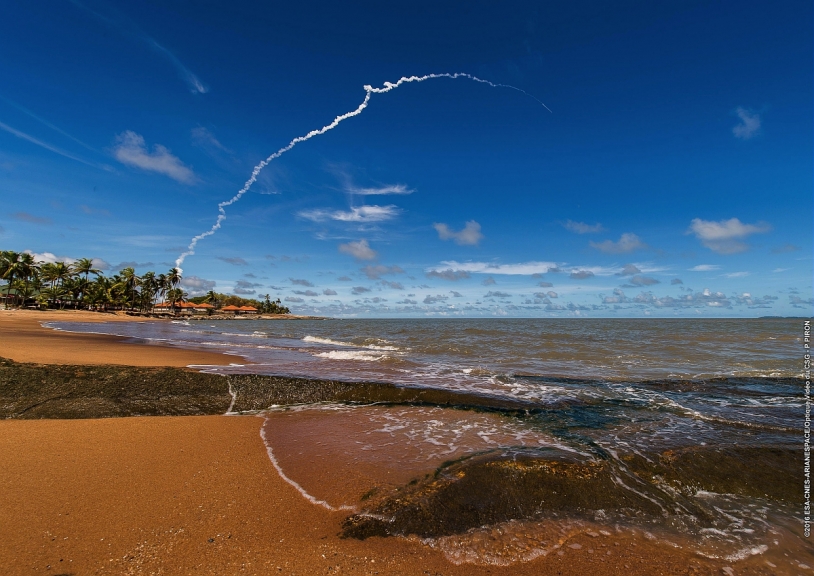Vega
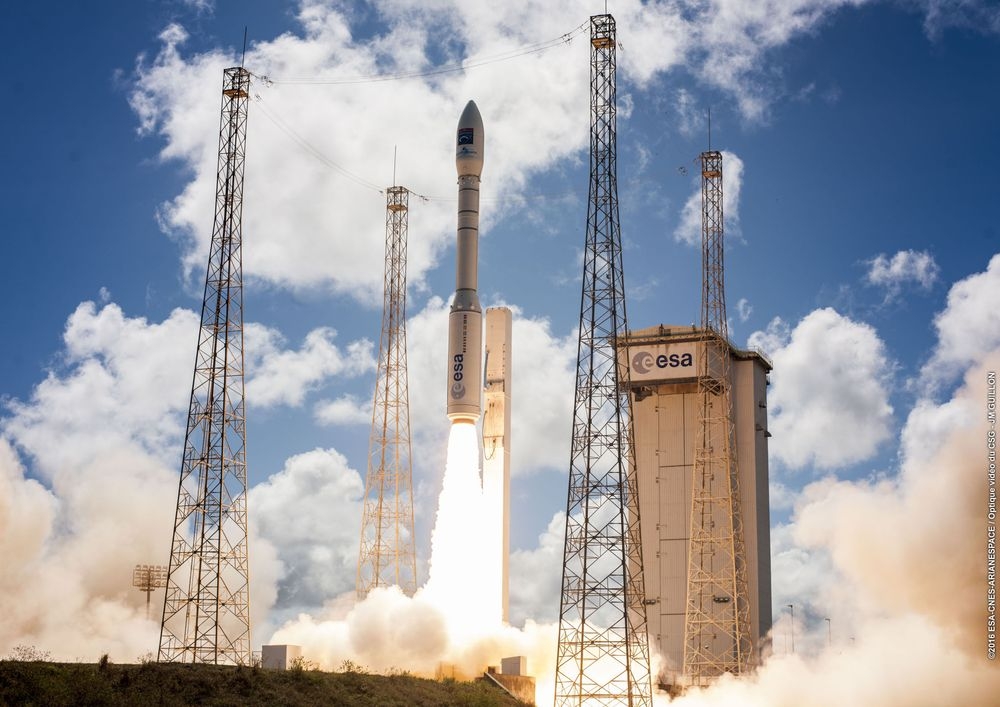
Vega is the European Space Agency’s light launcher. It is the smallest launcher to lift off from the GSC. Its lift-off mass is 138 tonnes, compared to 780 tonnes for Ariane 5 and 380 tonnes for Soyuz.
The launcher was designed to meet the growing demand for smaller satellites that do not require a heavy launcher like Ariane 5. Vega is capable of putting payloads of up to 2,500 kg into low Earth orbit at an altitude of 800 km.
Developed at Italy’s initiative, Vega lifted off for the first time from the Guiana Space Centre on 13 February 2012. Seven ESA member countries participated in the programme (Italy, France, Spain, Belgium, the Netherlands, Switzerland and Sweden) and contributed more than €450 million to cover Vega's development costs. The Italian company Avio built the launcher in French Guiana.
A launcher for science
Although not specifically designed for scientific satellites, Vega’s specifications make it an ideal launcher for scientific missions targeting the low Earth orbit, as shown by these recent missions:
- IXV (2015), atmospheric re-entry technology demonstrator
- LISA Pathfinder (2015), a demonstrator for gravitational wave measuring instruments
- Sentinel-2A and 2B (2015 and 2017), satellites to monitor the environment
- ADM-Aeolus (2018), satellite to study Earth's winds on a global scale
- Prisma (2019), a new generation Earth observation satellite
Vega in figures
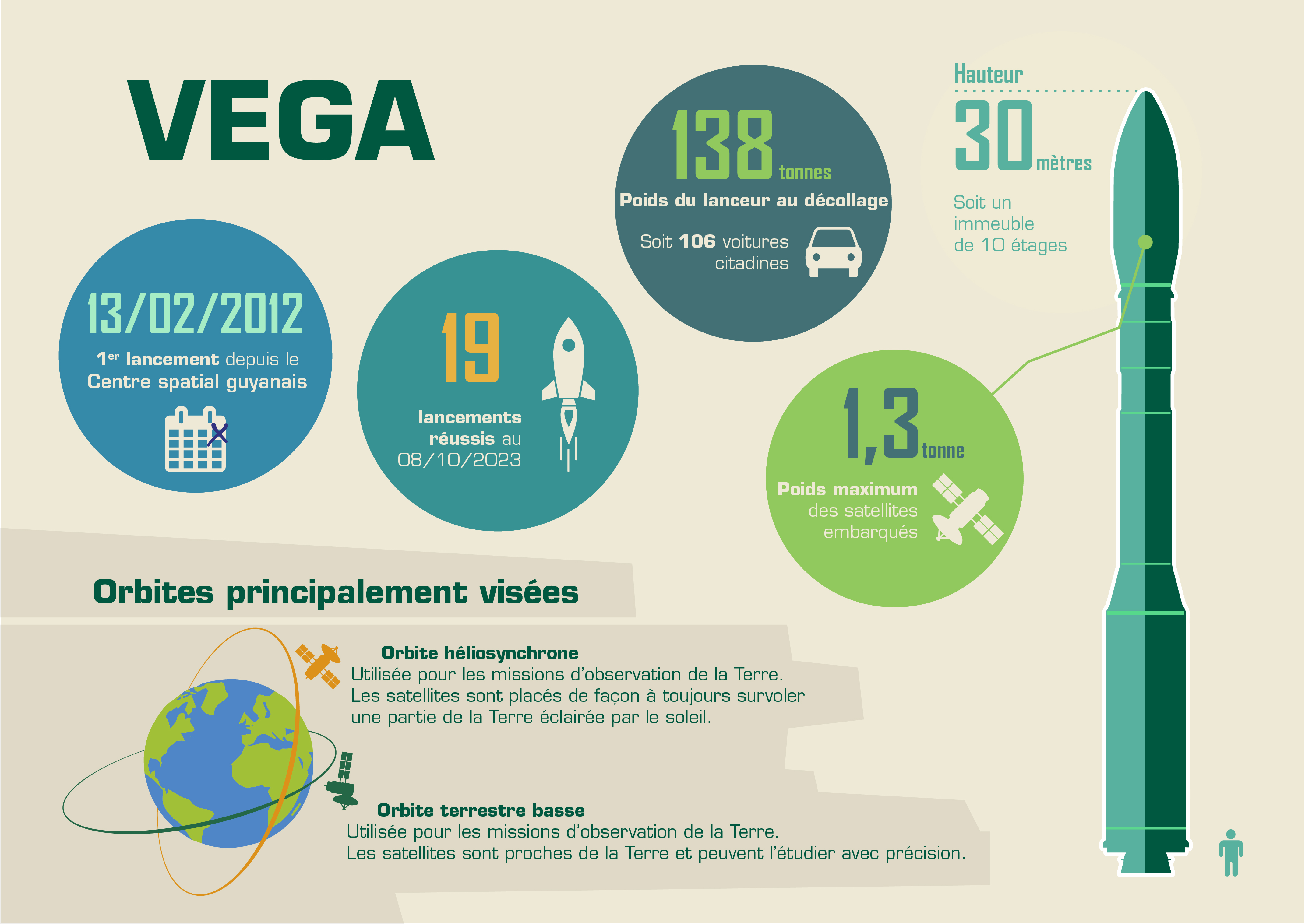
Technical specifications
Vega is a four-stage, single-body launcher.
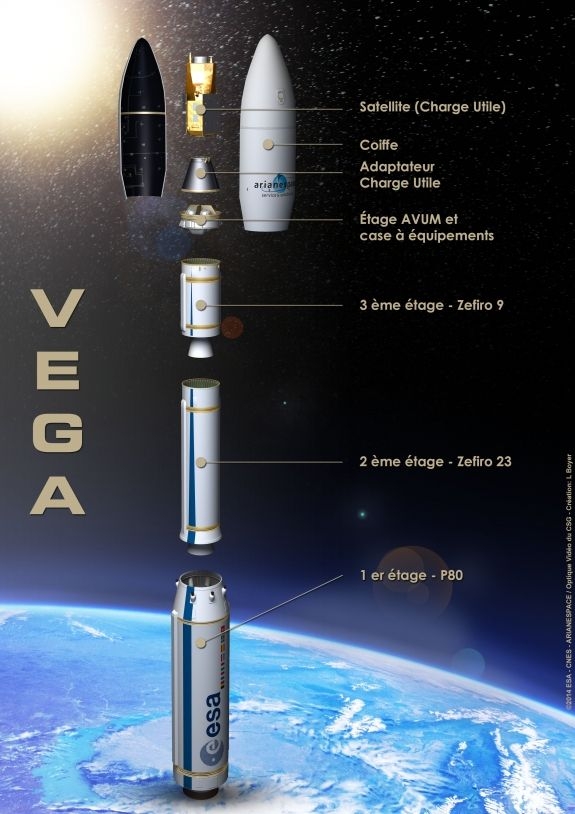
Stages 1, 2 and 3 provide the main power for launching Vega. They are loaded with solid propellant (powder). The P80 (the first stage) is produced at the Guiana Space Centre. The Zefiro 23 and Zefiro 9 are built in Italy and are shipped to Guyana by sea.
The AVUM stage provides propulsion for Vega, after the burnout and jettison of the first three stages. It is re-ignitable, and fine-tunes the position of the satellite in its target orbit.
The vehicle equipment bay is the launcher's electronic brain. It houses Vega's monitoring and guidance system.
The fairing is the top end of the launcher. It protects the satellites that are placed inside.
To find out more about the Vega launcher, visit the CNES website.
Assembly and preparation

Arrival of the launcher components
As with Ariane 5, several Vega components arrive by ship. They are then transported directly to the Vega launch complex.
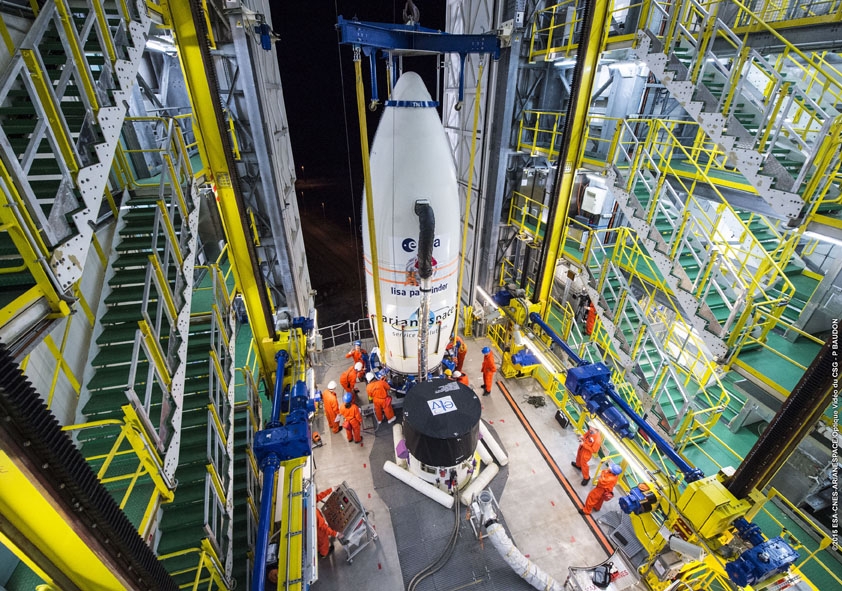
Assembly of the stages
The P80, Vega's first stage, is in the launch zone. The stages are then successively hoisted up and mounted at the top of the launcher: first the Zefiro 23, then the Zefiro 9, the AVUM and finally the satellite under the fairing.

filling
The fuelling of Vega starts six days before the launch and takes place over a period of three days: one day per propellant.
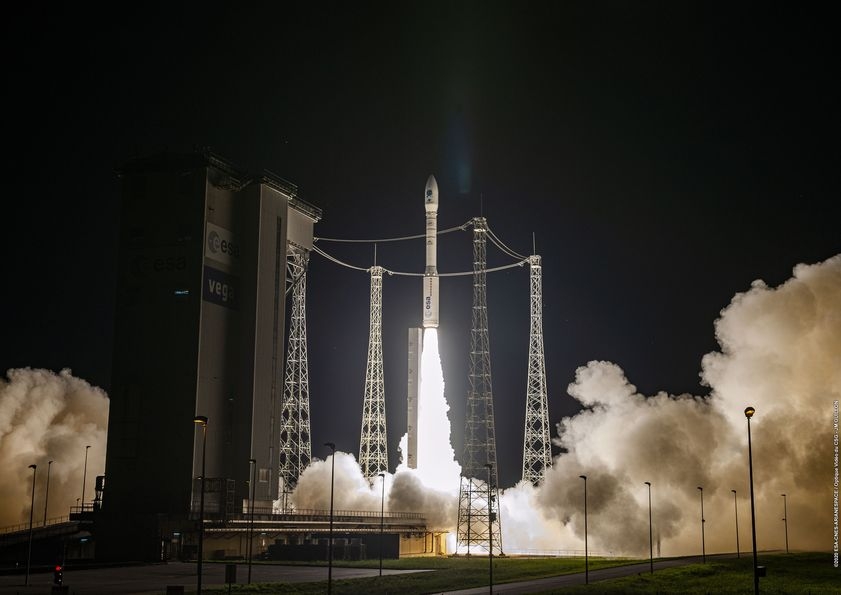
lift-off
The preparation operations are completed. A few hours before T0, the gantry moves away from the launcher: Vega is ready for lift-off!
Launch sequence

Launcher lift-off
As Vega is a single-body launcher, its stages only ignite when the previous stage has shut down and separated. For lift-off, the P80 is ignited. A little less than two minutes later, this first stage separates from the launcher, having consumed all its fuel. The Zefiro 23 stage then takes over, also for just under two minutes of thrust. Once empty, it is ejected and the third stage, the Zefiro 9, ignites. The Zefiro 9’s thrust continues for about 2.5 minutes, during which time the fairing is jettisoned and the launcher leaves the Earth’s atmosphere.
Entry into orbit and end of mission
The final stage, the Avum, starts its mission after 6 minutes of flight. It will put the satellite in its orbit. With its re-ignitable stage, it can alternate between the thrust phases and the ballistic phases to precisely adjust its trajectory. Once the satellite(s) have been put into orbit, the Avum de-orbits so as not to create more space debris.
Launch facilities
Vega has its own facilities at the GSC. Located in the Vega Launch Complex, they reuse part of the former Ariane 1, 2 and 3 launch zone facilities, adapted for the Italian launcher.
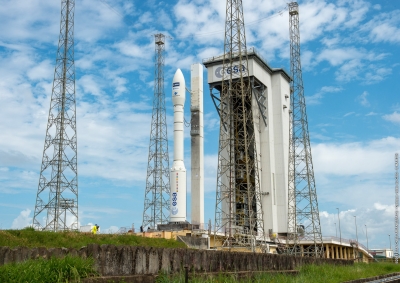
launch History
| Date | Flight name | Payload | Target orbit | Mission status |
| 13/02/2012 | VV01 | LARES + ALMASAT + 7 cubesats | Basse | Success |
| 07/05/2013 | VV02 | PROBA-V + VNREDSAT-1 + ESTCUBE-1 | Héliosynchrone | Success |
| 30/04/2014 | VV03 | KazEOSat-1 | Héliosynchrone | Success |
| 11/02/2015 | VV04 | IXV | Vol suborbital | Success |
| 23/06/2015 | VV05 | Sentinel-2A | Héliosynchrone | Success |
| 03/12/2015 | VV06 | LISA Pathfinder | Point de Lagrange 1 | Success |
| 16/09/2016 | VV07 | PeruSAT-1 + 4 satellites SkySat | Héliosynchrone | Success |
| 05/12/2016 | VV08 | Göktürk-1 | Héliosynchrone | Success |
| 07/03/2017 | VV09 | Sentinel-2B | Héliosynchrone | Success |
| 02/08/2017 | VV10 | Opsat 3000 + Venµs | Héliosynchrone | Success |
| 08/11/2017 | VV11 | MOHAMMED VI-A | Héliosynchrone | Success |
| 22/08/2018 | VV12 | ADM-Aeolus | Héliosynchrone | Success |
| 21/11/2018 | VV13 | MOHAMMED VI-B | Héliosynchrone | Success |
| 22/03/2019 | VV14 | Prisma | Héliosynchrone | Success |
| 10/06/2019 | VV15 | FalconEye1 | Héliosynchrone | Fail |
| 03/09/2020 | VV16 | SSMS (53 micro- et nano-satellites) | Héliosynchrone | Success |
| 17/11/2020 | VV17 | Taranis + SEOSAT-Ingenio | Héliosynchrone | Fail |
| 28/04/2021 | VV18 | Pléiades Néo 3 + 5 micro- et nanosatellites | Héliosynchrone | Success |
| 16/08/2021 | VV19 | Pléiades Néo 4 + 4 micro- et nanosatellites | Héliosynchrone | Success |
| 16/11/2021 | VV20 | CERES (3 satellites) | Héliosynchrone | Success |
| 08/10/2023 | VV23 | Formosat-7R Triton + Theos-2 + 10 nanosats | Héliosynchrone | Success |
